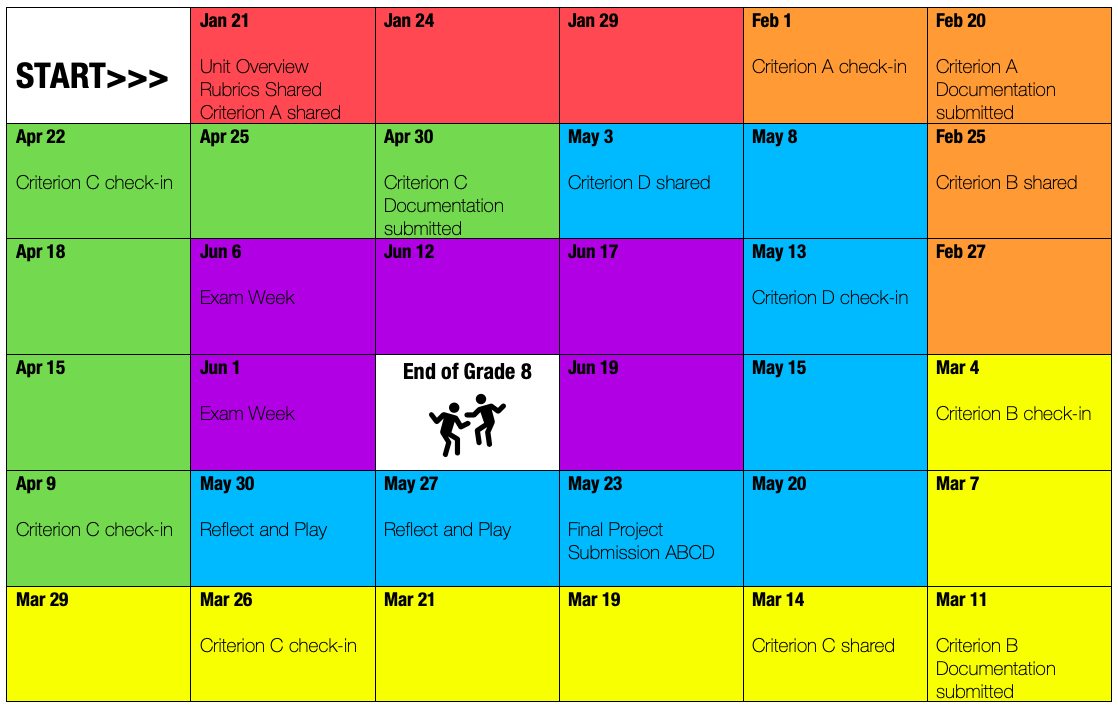Key Concept: Communities
Related Concepts: Innovation, Perspective
Global Context: Scientific and Technical Innovation
Statement of Inquiry:
“Through game design, we can expose people to ideas and situations they might not otherwise encounter”
Design situation
Games are great, but there is always room to improve and innovate. Designers like to push things forward, and game designers are no exception. This will be our aim too. In teams or as individuals, we are going to try and move gaming along in a positive way (even if just in a small way).We could create a game that tries something that hasn’t been done enough, or at all. We could also create a game that avoids a big problem that exists in games today or create a game that helps people connect with issues they might otherwise ignore.
Game developers are creating games for other people to play. Those people will have opinions. If they are not entertained, the opinions won’t be good. We don’t live in a bubble. Everyone around us has an opinion about the things we do, and they often push it on us. Should we listen to them, or ignore them? You will need to decide how you will most effectively use the feedback of others when creating your game.
Your challenge is to create a game that exposes the players to ideas and situations they might not otherwise encounter.
Task Specific Clarifications
Criterion A: Inquiring and Analysing
Criterion C: Creating the Solution
Command Terms
This task specific clarification sections (above) tell you exactly what is expected of you in this design project. Throughout each section, ‘command terms’ are used to indicate the depth and extent of the work that is expected. Use the list below to look up the meaning of each command term when you encounter them. I can, of course, provide additional advice.
| Command Term | Definition |
| Analyse |
Break down in order to bring out the essential elements or structure. To identify parts and relationships, and to interpret information to reach conclusions. |
| Construct |
Display information in a diagrammatic or logical form. |
| Create |
To evolve from one’s own thought or imagination, as a work or an invention. |
| Define |
Give the precise meaning of a word, phrase, concept or physical quantity. |
| Demonstrate |
Prove or make clear by reasoning or evidence, illustrating with examples or practical application. |
| Describe |
Give a detailed account or picture of a situation, event, pattern or process. |
| Design |
Produce a plan, simulation or model. |
| Develop |
To improve incrementally, elaborate or expand in detail. Evolve to a more advanced or effective state. |
| Evaluate |
Assess the implications and limitations; make judgments about the ideas, works, solutions or methods in relation to selected criteria. |
| Explain |
Give a detailed account including reasons or causes. |
| Identify | Provide an answer from a number of possibilities. Recognize and state briefly a distinguishing fact or feature. |
| Justify | Give valid reasons or evidence to support an answer or conclusion. |
| List | Give a sequence of brief answers with no explanation. |
| Outline | Give a brief account. |
| Present | Offer for display, observation, examination or consideration. |
| Prioritize | Give relative importance to, or put in an order of preference. |
| State | Give a specific name, value or other brief answer without explanation or calculation. |
| Summarize |
Abstract a general theme or major point(s). |
